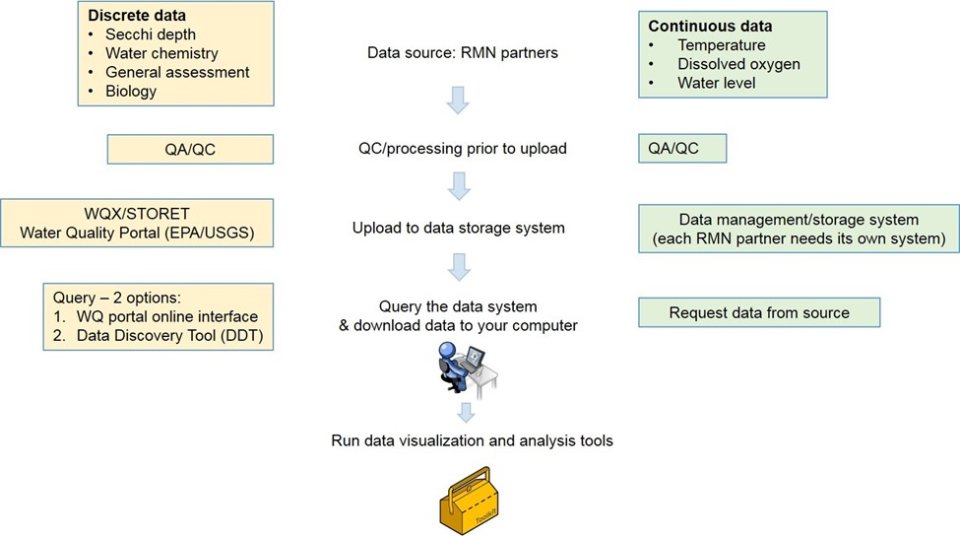Data Management
The RMN data are divided into two general types: discrete and continuous. The goal is to upload discrete data (e.g., biology, water chemistry, general habitat assessment, and additionally for lakes Secchi depth, vertical profile, and ice cover, and soils for wetlands) to the Water Quality Portal/Water Quality Exchange (WQX), where it can be accessed by other regional partners. For continuous data, each entity needs its own data management system. Figure 1 shows the general workflow for the various indicators.
While the discrete and continuous data end up in different storage systems, the general steps are consistent:
- QAQC/processing
- Upload to appropriate data storage system
- If the user wants to run analyses on the data, they can query the data system, download the data onto their computer and run various data visualization and analysis tools
In concept, these steps seem simple, but data management is often a challenge. There are no ‘one-size-fits-all’ solutions for RMN partners because each entity has its own unique data system and varying levels of Information Technology (IT) support.
There are three options to upload discrete data to WQX (Instructions for uploading (discrete) data into WQX):
- Standard web-based application (WQX Web) that uses Microsoft Excel spreadsheets.
- Create a custom submission application using WQX XML schema through Exchange Network Nodes or Node Clients
- Use a third-party system such as the Ambient Water Quality Monitoring System (AWQMS).

